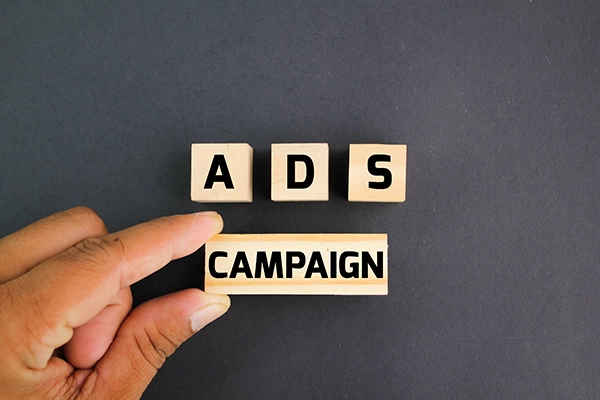If you’re running Google Ads, you’re likely expecting them to bring in a steady stream of traffic and sales. However, it can be frustrating when your ads fail to deliver the results you want. In this article, we’ll explore some common reasons why Google Ads may not be working for you and what you can do to fix the problem.
Key Takeaways
-
- Google Ads may not work if the targeting is too broad or too narrow.
- Poor ad copy, low-quality landing pages, and slow loading times can negatively impact your ads’ performance.
- Google’s algorithms take time to find the right target audience for your ads.
- Monitoring and tweaking your ad campaigns can lead to better results and a higher return on investment (ROI).
- Your ads’ targeting is too broad or too narrow
- Your competition is outbidding you
- Your landing page isn’t created to convert, which we have steps to fix.
To avoid these issues, it’s important to carefully consider your target audience and create ads that speak directly to their needs and interests. Use demographic data, such as age, gender, and location, to narrow down your target audience, and use keywords that are relevant to their search queries. You can also use negative keywords to exclude searches that are not relevant to your ads.
In addition to targeting, you may also want to consider the ad format you’re using. Google Ads offers a variety of formats, including text ads, image ads, and video ads. Each format has its own advantages and disadvantages, so it’s important to choose the format that best suits your goals and target audience.

Do You Have Poor Ad Copy, Low-Quality Landing Pages, or Slow Loading Times?
Even if your ads are targeting the right audience, they may still fail to convert if your ad copy is poor, your landing pages are low-quality, or your site has slow loading times. These issues can negatively impact your ad’s performance, as they can discourage users from clicking on your ads or cause them to lose interest once they arrive on your site.
To avoid these issues, make sure your ad copy is clear, concise, and compelling. Use strong calls to action to encourage users to take action, and make sure your landing pages are high-quality and relevant to your ads. Ensure your website has fast loading times, as this can also impact your ad’s quality score.
In addition, you may also want to consider the message and tone of your ads. Make sure your ads are aligned with your brand and the values of your target audience. Avoid using “clickbait,” or deceptive language, as this can damage your credibility and reputation.
Google’s Algorithms Take Time to Find the Right Target Audience
It’s important to remember that Google’s algorithms need time to find the right target audience for your ads. It may take several days or even weeks for your ads to start performing well, as Google needs to gather data and optimize your campaigns.
Monitor Your Ads
To give your ads the best chance of success, be patient and monitor your campaigns closely. Use Google Analytics to track your ad’s performance, and tweak your campaigns based on the data you gather. You may need to adjust your targeting, ad copy, or bidding strategy to improve your ads’ performance.
In addition, you may also want to consider the timing and frequency of your ads. Make sure your ads are being shown at times when your target audience is most likely to be online and avoid bombarding them with too many ads. Finding the right balance can help improve the effectiveness of your ads and ultimately lead to a higher return on investment.

Does Your Google Bidding Strategy Need Improvement?
If you’re not bidding enough, your ads may not be shown to enough people, while bidding too much can quickly eat into your budget without delivering desired results. To avoid these issues, it’s important to understand how the bidding system works and how to optimize your bids.
How Does The Google Ad Bidding Work?
Google Ads uses an auction-based system, where advertisers bid on certain keywords and the highest bidder gets their ad shown. However, the actual cost per click (CPC) is determined by a number of factors, including the relevance and quality of your ad, landing page experience, and ad rank.
To optimize your bidding strategy, you may want to consider automated bidding, which uses machine learning to optimize your bids based on your goals and budget. You can also use bid adjustments to increase or decrease your bids based on various factors, such as time of day or device type.
Are Your Competitors Outbidding You on Google Ads?
If you find that your Google Ads aren’t working, it’s possible that your competitors are outbidding you. This can make it difficult for your ads to get shown to your target audience, especially if you’re competing in a highly competitive industry or targeting popular keywords.
To address this issue, there are several strategies you can use to help level the playing field and get your ads in front of your target audience.
Target Long-Tail Keywords
One strategy you can use is to target long-tail keywords. Long-tail keywords are more specific and have lower competition, which can make it easier for your ads to get shown to your target audience. For example, if you’re selling running shoes, instead of targeting the broad keyword “running shoes,” you could target more specific long-tail keywords, such as “men’s trail running shoes” or “women’s lightweight running shoes.”
Targeting long-tail keywords can help you reach a more specific audience who are more likely to convert, as they are actively searching for specific products or services that you offer. Additionally, long-tail keywords tend to have a lower cost per click (CPC) than broader keywords, which can help you stretch your ad budget further.
Improve Your Ad Quality Score
Another strategy to help level the playing field is to improve your ad quality score. Your ad quality score is a metric that Google uses to evaluate the relevance and quality of your ads and landing pages. A higher quality score can help your ads rank higher and lower your CPC, even if your competitors are bidding more.
To improve your ad quality score, focus on creating high-quality ads and landing pages that are relevant to your target audience. Use clear and compelling ad copy that speaks directly to their needs and interests, and ensure that your landing pages provide a seamless user experience. Additionally, make sure that your website is mobile-friendly and has fast loading times, as these factors can also impact your ad quality score.
Expand Your Ad Campaigns
Finally, consider expanding your ad campaigns to include other channels, such as social media or display advertising. This can help you reach a wider audience and generate more leads and sales, even if your competitors are outbidding you on Google Ads.
When expanding your ad campaigns, consider the specific needs and preferences of your target audience. For example, if you’re targeting a younger demographic, you may want to focus on social media channels such as Instagram or Snapchat. Alternatively, if you’re targeting a more professional audience, you may want to focus on LinkedIn or display advertising on industry-specific websites.
By expanding your ad campaigns, you can diversify your advertising efforts and potentially generate more leads and sales, even if your Google Ads aren’t performing as well as you’d like.
Create High-Quality Landing Pages
Once users click on your ads, they should be directed to high-quality landing pages that are relevant to their search query and aligned with your ad copy. Your landing pages should provide a seamless user experience and clearly communicate the benefits and features of your product or service.
The Perfect Landing Page to Convert Leads
A landing page is a crucial element in the conversion process. It’s where potential customers land after clicking on your ad, and where you have the opportunity to persuade them to take action. Here are some key elements of a landing page that can help you convert leads into customers.
Clear Headline and Subheadline
Your headline is the first thing visitors will see on your landing page, so it needs to be clear and attention-grabbing. It should communicate the unique value proposition of your product or service and make it clear what the visitor will get if they take action.
The subheadline should provide more detail about your offer and explain how it can benefit the visitor. Make sure your headline and subheadline are aligned with your ad copy and provide a seamless transition from your ad to your landing page.
Compelling Visuals
Visuals can help break up large blocks of text and make your landing page more engaging. Use high-quality images and videos that are relevant to your product or service and help communicate its unique value proposition.
Make sure your visuals are optimized for fast loading times and are aligned with your brand and the preferences of your target audience. A/B testing can help you determine which visuals are most effective in converting leads.
Persuasive Copy
Your copy should be persuasive and focused on the benefits of your product or service. Use language that speaks directly to your target audience’s needs and interests, and highlight the unique features and benefits of your offer.
Use bullet points to break up large blocks of text and make it easy for visitors to skim your content. Additionally, make sure your copy is free of errors and is optimized for search engines to improve your landing page’s visibility.
Strong Call-to-Action (CTA)
Your call-to-action (CTA) is the element that encourages visitors to take action, such as filling out a form or making a purchase. It should be prominently displayed on your landing page and be clear and specific about what action the visitor should take.
Use language that creates a sense of urgency and emphasizes the benefits of taking action. Make sure your CTA stands out visually and is easy to find on your landing page.
Trust Indicators
Trust indicators can help build credibility and trust with your visitors, which can make them more likely to take action. Use social proof, such as customer testimonials and reviews, to demonstrate the value of your product or service.
Additionally, include security badges and privacy policies to reassure visitors that their information is safe and secure. This can help reduce anxiety and increase the likelihood that visitors will take action.
Optimize Your Website’s Loading Times
Slow loading times can be a major barrier to your ad’s performance, as they can cause users to lose interest and abandon your site. To optimize your website’s loading times, consider using a content delivery network (CDN), compressing images and other media, and minifying your code.
Additionally, ensure that your website is hosted on a reliable server and has sufficient bandwidth to handle incoming traffic. Use tools such as Google’s PageSpeed Insights to identify specific areas where you can improve your website’s loading times.
If your Google Ads aren’t performing as well as you’d like, it can be frustrating and discouraging. However, by focusing on improving ad targeting, creating compelling ad copy and landing pages, optimizing your bidding strategy, and expanding your advertising efforts to other channels, you can improve the effectiveness of your ads and generate more leads and sales for your business.
Remember to monitor your ad campaigns regularly and make adjustments as needed, and you’ll be on your way to achieving your advertising goals and growing your business through Google Ads.
Still Struggling? Looking For A Turn Key Solution?
If you’re struggling with your Google Ads and need help optimizing your campaigns, Valorous Circle is here to help. Our team of digital marketing experts has years of experience working with businesses of all sizes, and we can work with you to create effective ad campaigns that generate leads and sales for your business.
Our approach to Google Ads is focused on delivering results that matter. We’ll work with you to understand your business goals, target audience, and advertising budget, and develop a customized strategy that is aligned with your objectives. We also help with organic SEO to optimize your ability to constantly rank on Google without spending marketing dollars.
At Valorous Circle, we believe in transparency and accountability. We provide regular reporting and analytics to help you track the effectiveness of your ad campaigns, and we’re always available to answer any questions or concerns you may have. Our team is dedicated to your success, and we’re committed to providing exceptional service and support to help you achieve your advertising goals.
So if you’re ready to take your online presence to the next level, contact Valorous Circle today. We’ll schedule a consultation to discuss your advertising needs and develop a customized strategy that is designed to help you achieve your business goals. With our help, you can optimize your ad campaigns, generate more leads and sales, and grow your business through the power of Google Ads.



